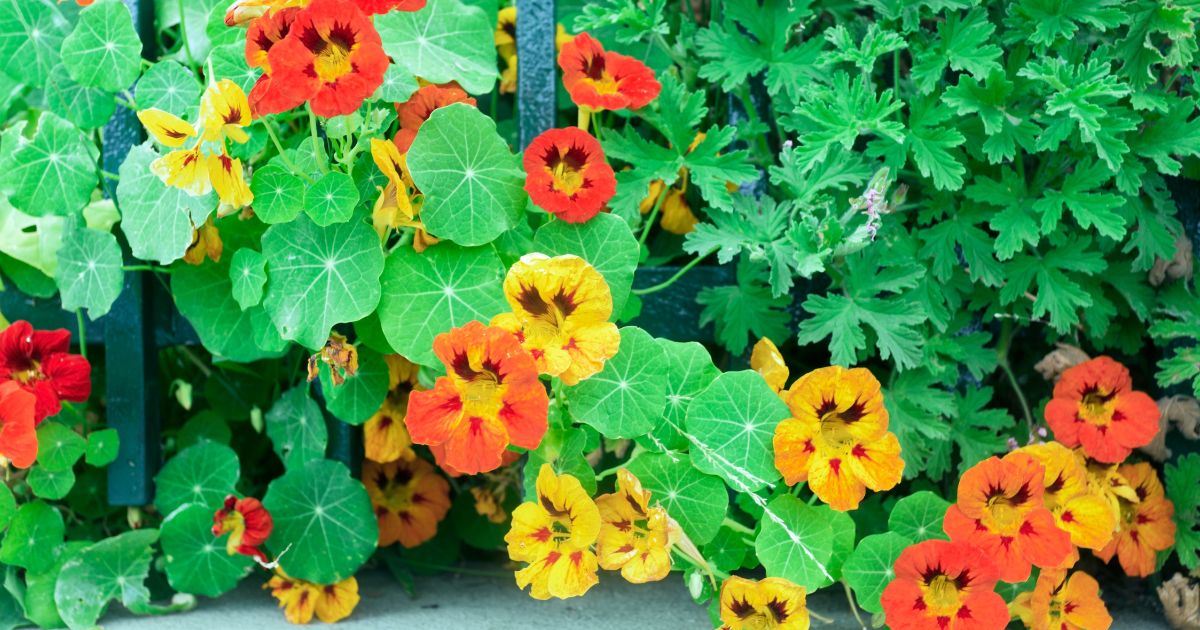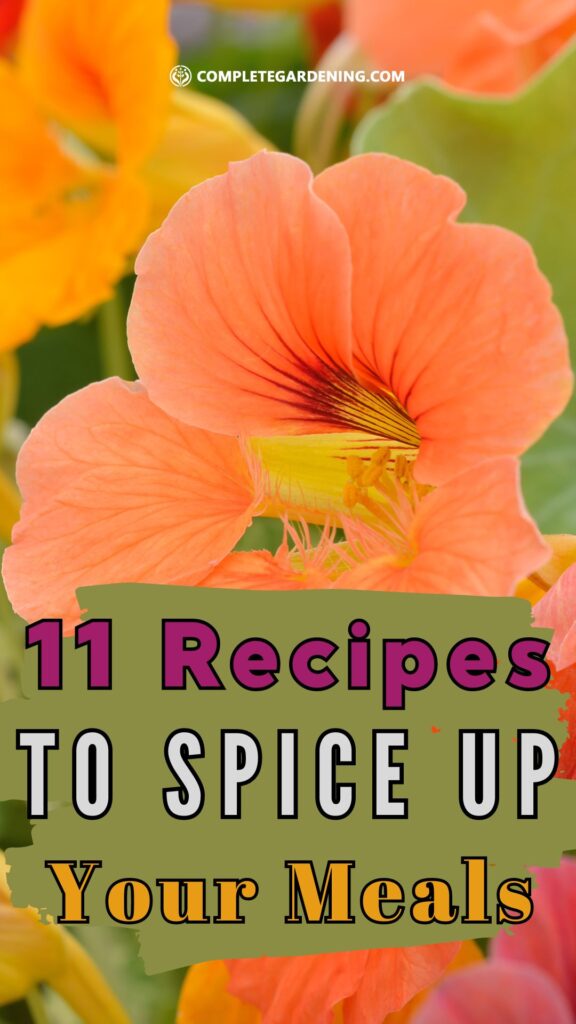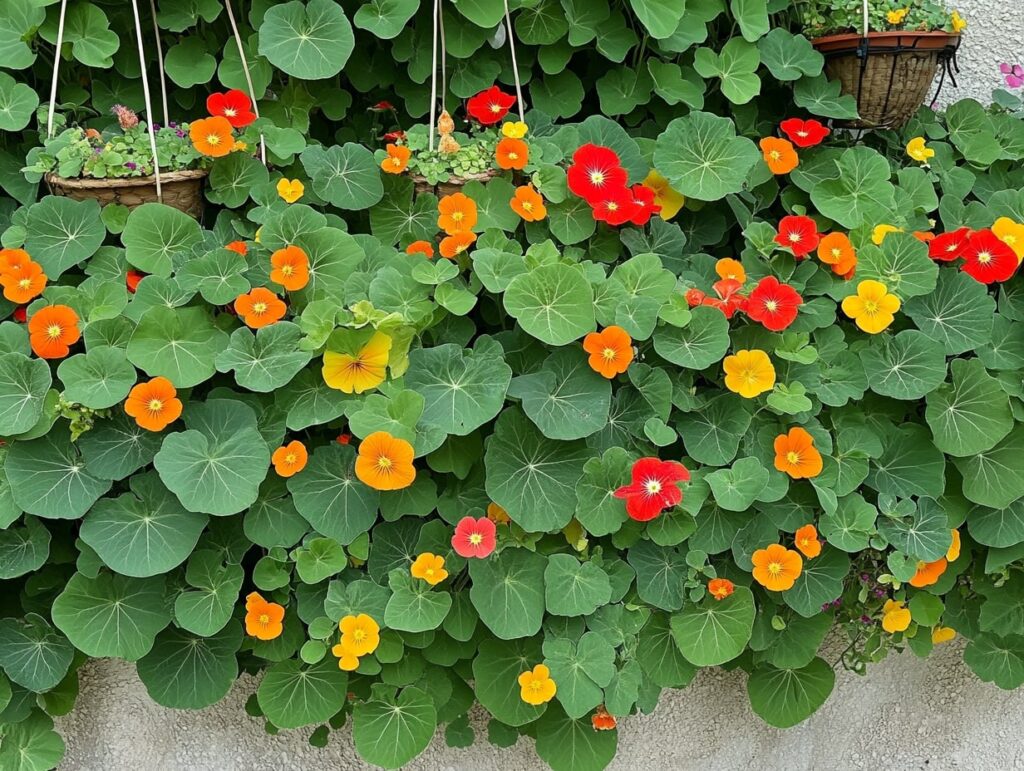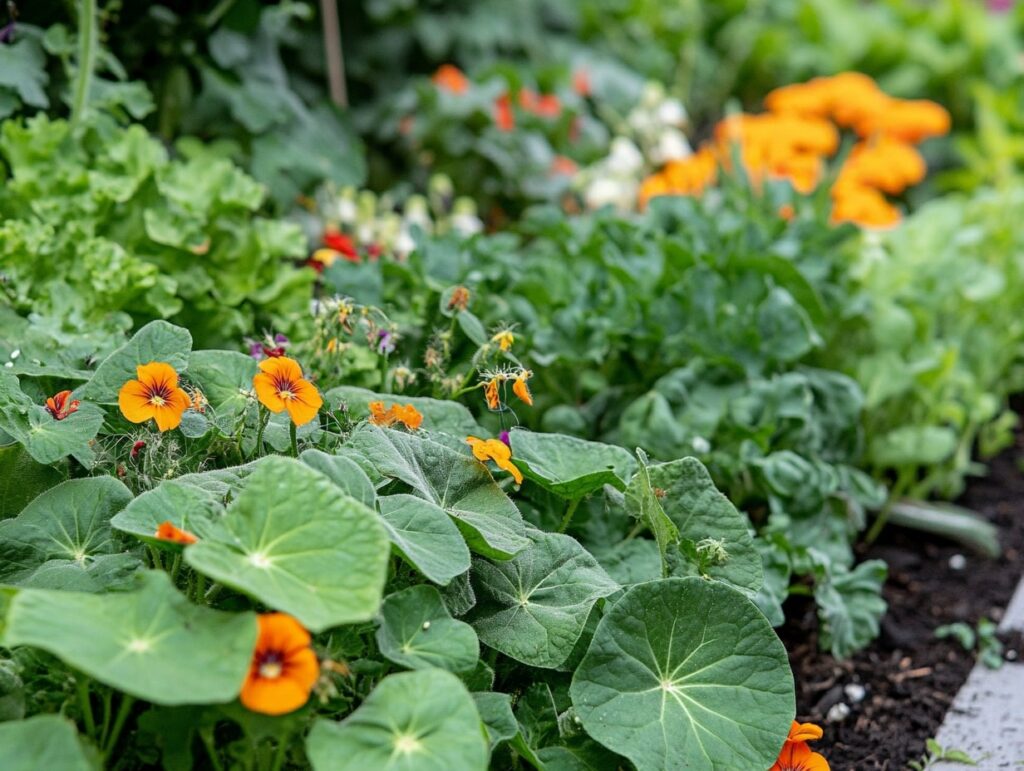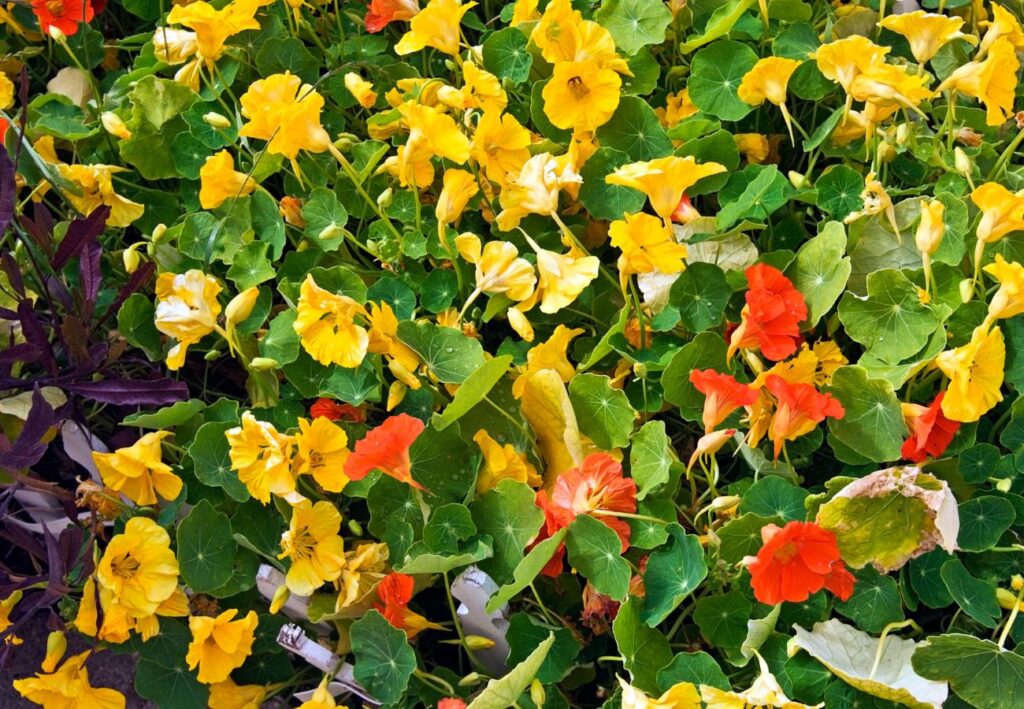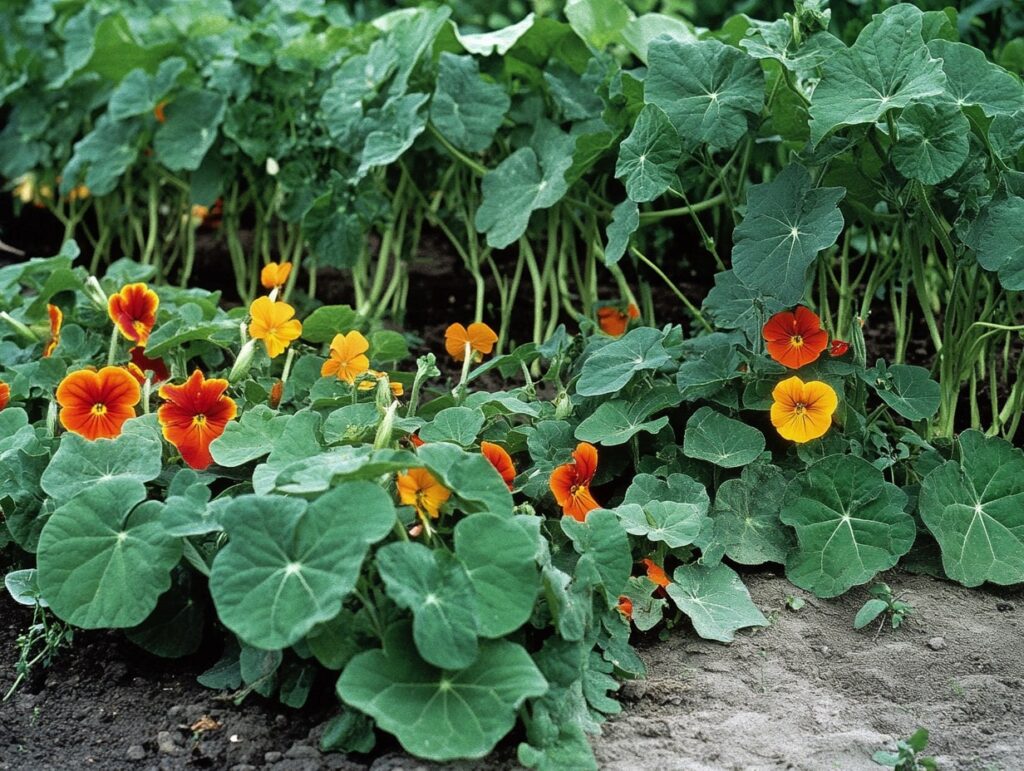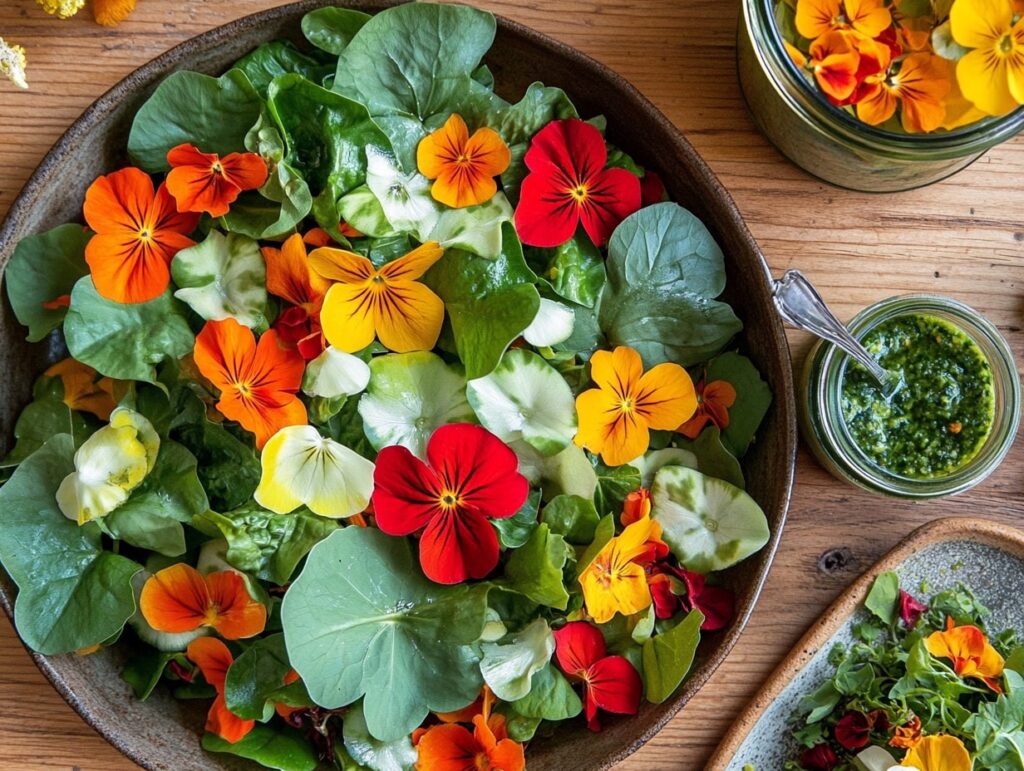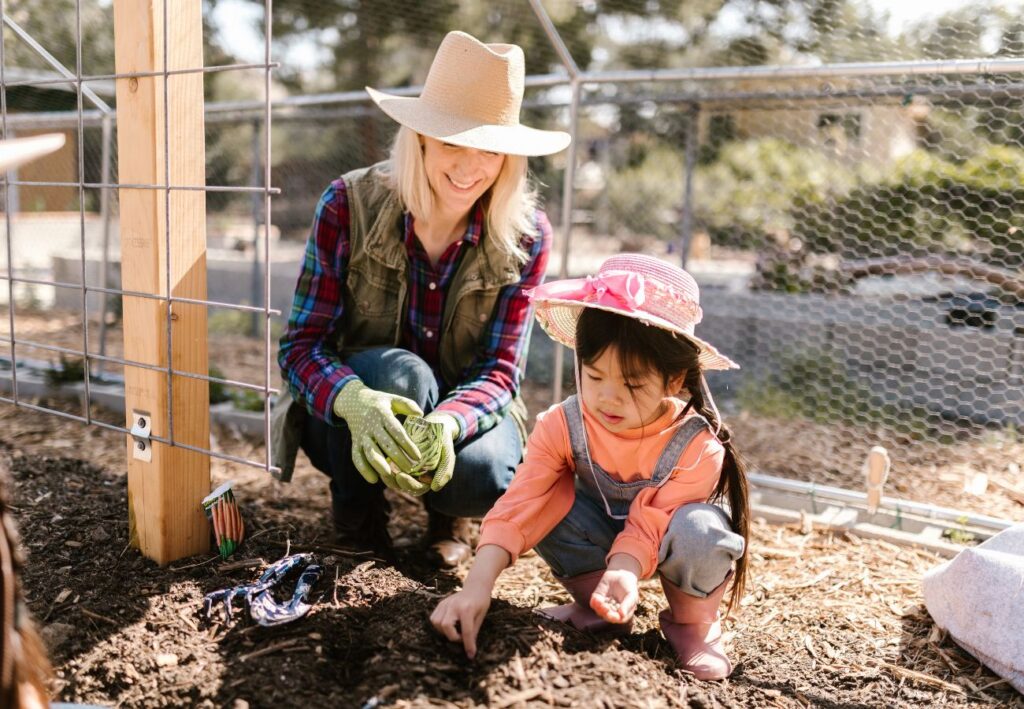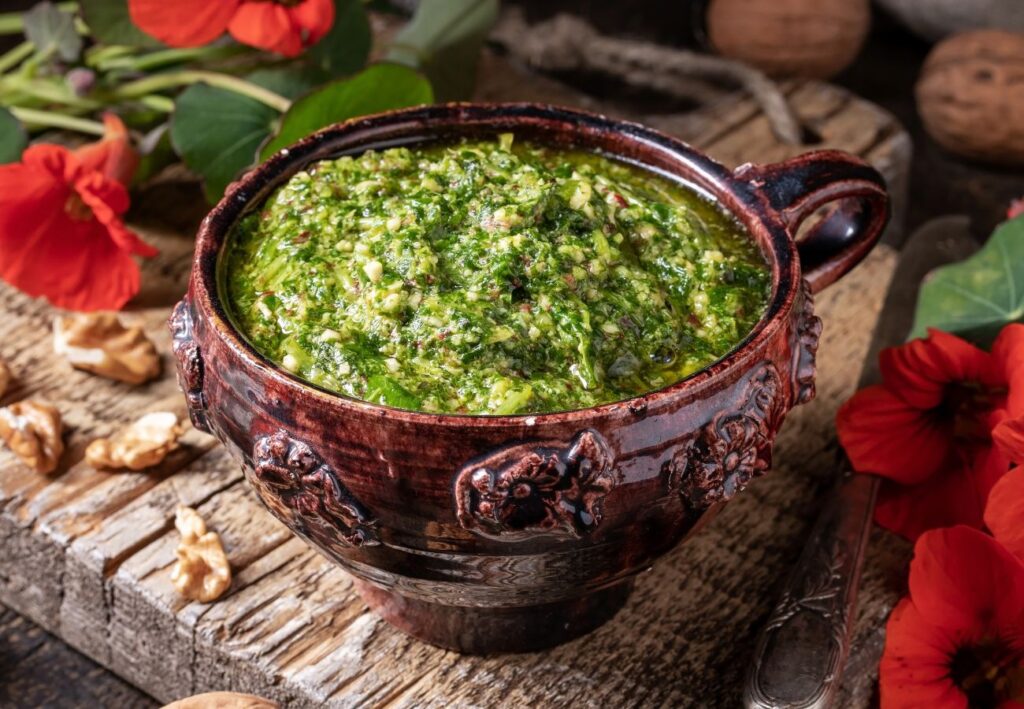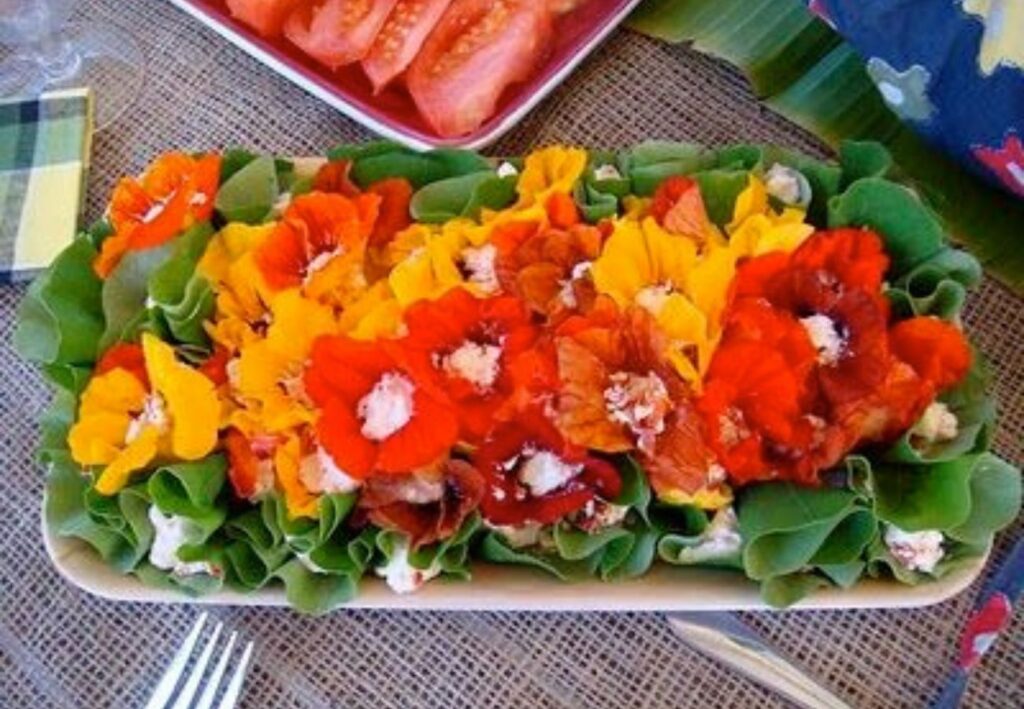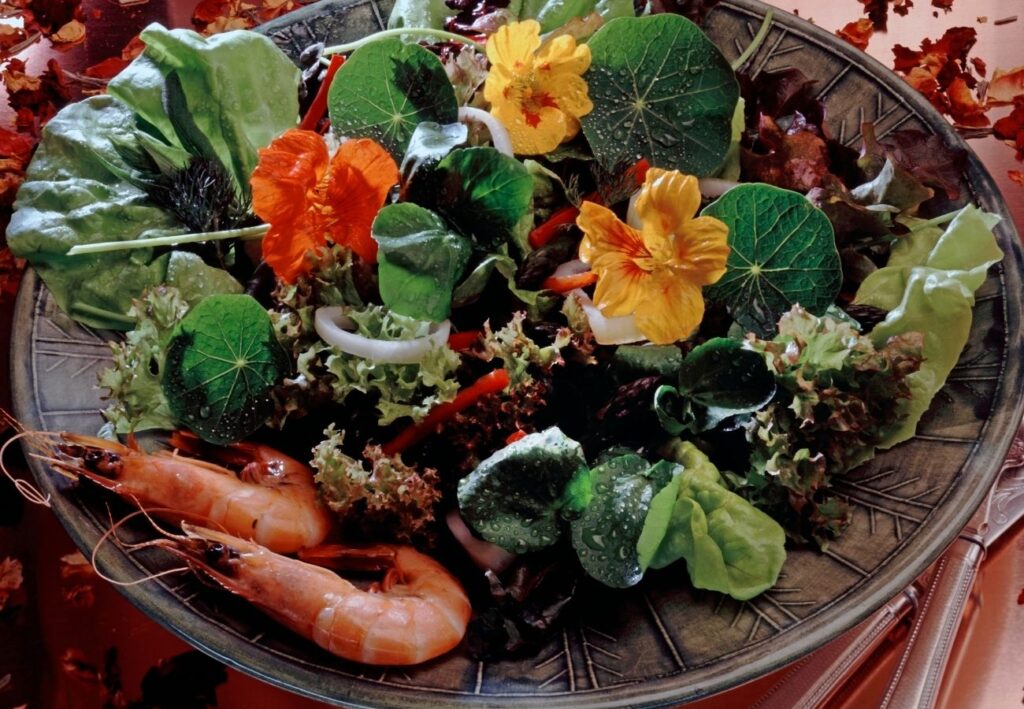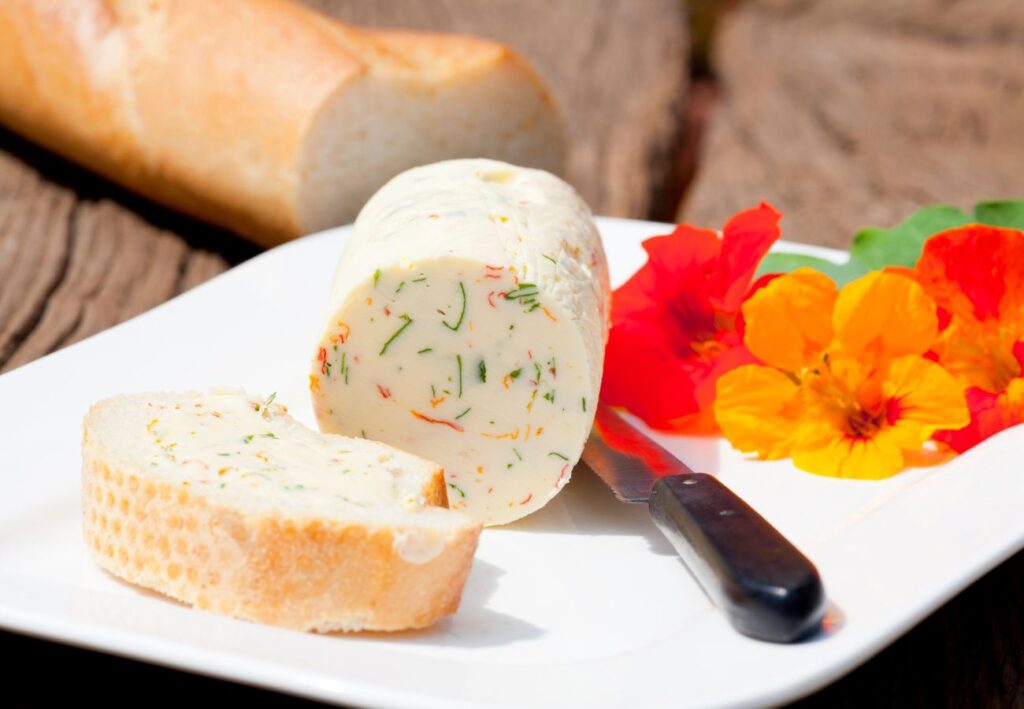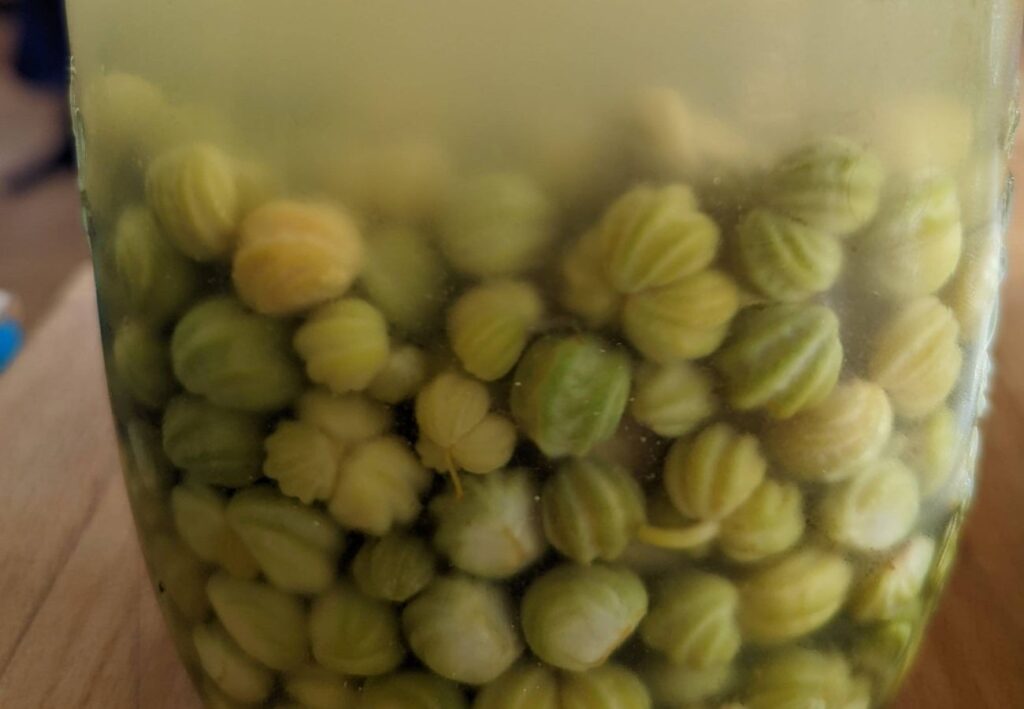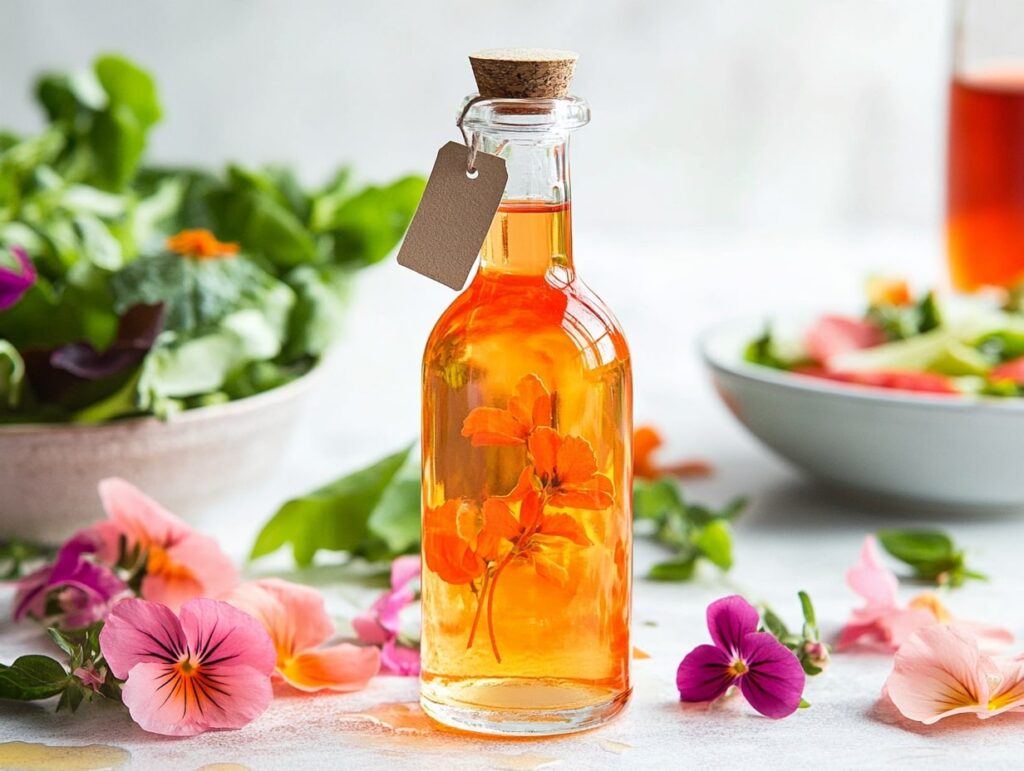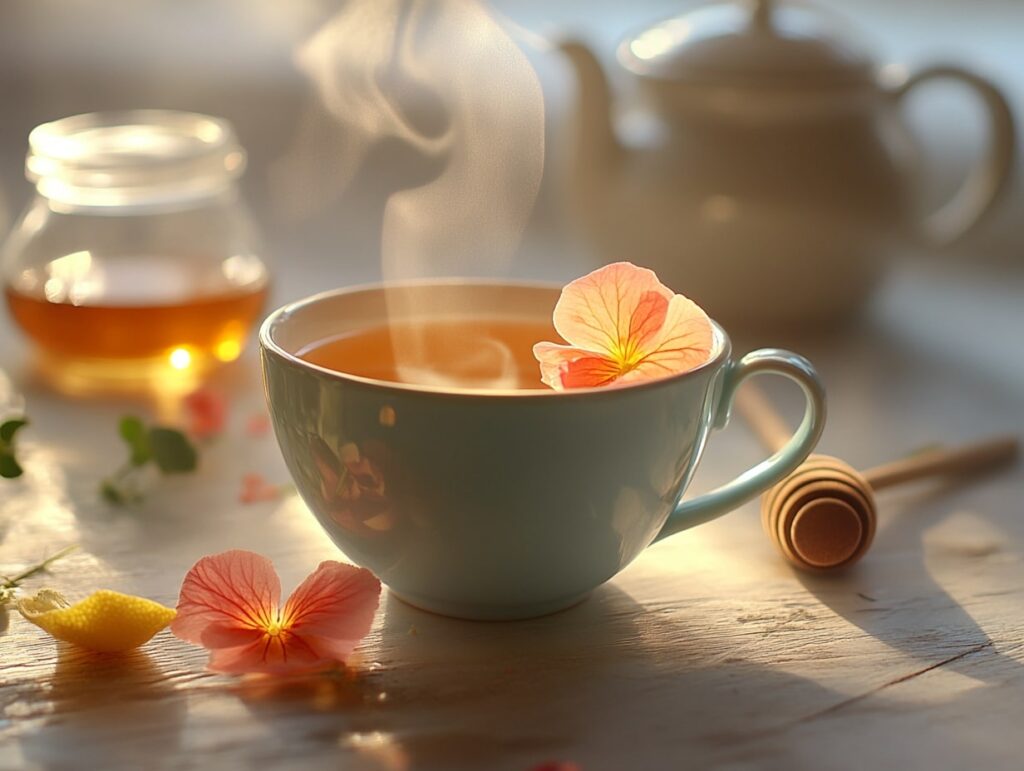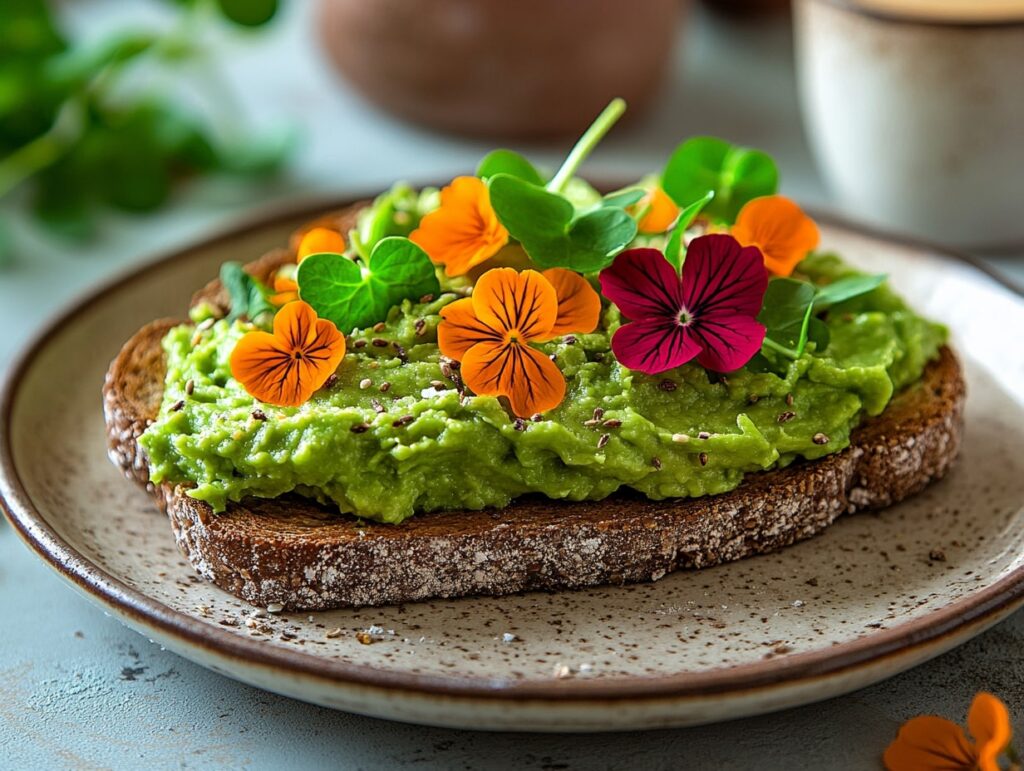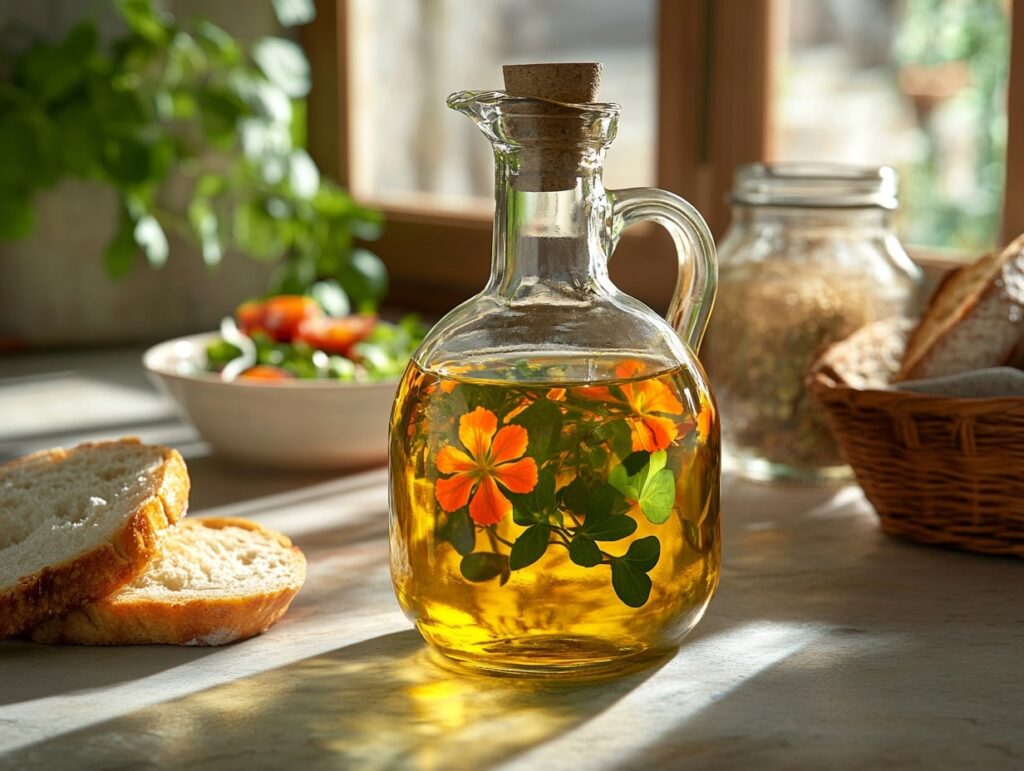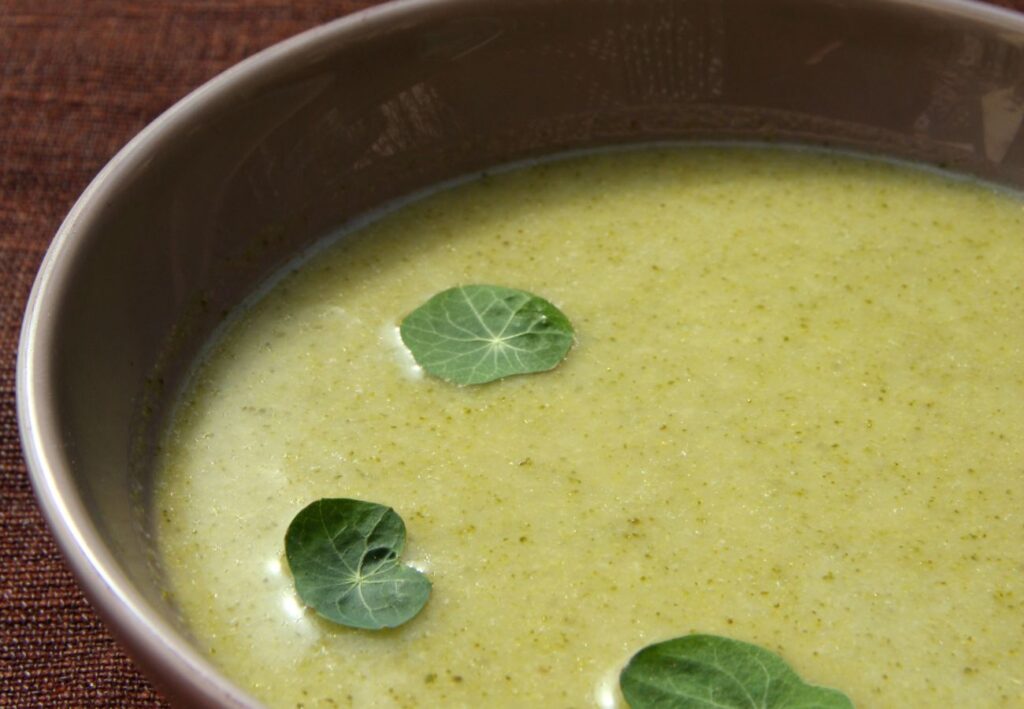Imagine stepping into your garden and seeing vibrant nasturtiums adding bursts of color to your space, attracting beneficial insects and improving your garden’s health.
Nasturtiums are an easy-to-grow plant that not only beautify your garden but also serve multiple practical purposes.
You’ll learn how these cheerful flowers support companion planting, deter pests, and even provide you with edible leaves, flowers, and seeds.
Nasturtiums aren’t just pretty faces in the garden; they bring unique flavors to your kitchen as well. Picture yourself garnishing a salad with their peppery leaves or preparing a delicious pesto with their bright, floral petals.
With 11 creative recipes, you’ll be inspired to incorporate these versatile plants into your daily meals.
Whether you’re an experienced gardener or just starting out, growing nasturtiums offers both beauty and utility. By the end of this article, you’ll have convincing reasons to plant these fantastic flowers in your garden and flavorful recipes to make the most of your harvest.
7 Reasons To Grow Nasturtiums
1. Easy to Grow and Low Maintenance
Nasturtiums are a dream for any gardener, especially beginners. These hardy plants thrive in poor soil conditions, require minimal care, and adapt well to various climates.
Whether you’re planting in containers, garden beds, or even hanging baskets, nasturtiums will flourish with little attention. Their resilience makes them an ideal choice for those who want vibrant blooms without the fuss of high-maintenance plants.
2. Natural Pest Deterrent
One of the standout benefits of growing nasturtiums is their ability to deter common garden pests. Aphids, whiteflies, and squash bugs are attracted to nasturtiums, making them a perfect trap crop.
By planting nasturtiums near your vegetables, you can lure pests away from your more vulnerable plants, protecting your garden without the need for chemical pesticides. Their presence creates a healthier garden environment, promoting natural pest control.
3. Attracts Beneficial Insects
Nasturtiums do more than just repel harmful insects; they also attract beneficial ones. Pollinators like bees and butterflies are drawn to the bright, nectar-rich flowers, helping to pollinate your garden.
Additionally, predatory insects such as ladybugs and hoverflies are attracted to the aphids on nasturtiums, which helps control the pest population naturally. This balance of attraction and deterrence supports a thriving, biodiverse garden ecosystem.
4. Companion Planting Benefits
As a companion plant, nasturtiums offer significant benefits to their neighbors. They pair exceptionally well with vegetables like tomatoes, cucumbers, and radishes.
Not only do they improve soil health by fixing nitrogen, but their sprawling growth habit also provides ground cover, suppressing weeds and retaining moisture.
Nasturtiums help create a symbiotic relationship in your garden, ensuring that all plants have the best chance to thrive.
5. Edible and Nutritious
Every part of the nasturtium plant is edible, from the leaves to the flowers to the seeds. The leaves and flowers have a unique peppery flavor, similar to watercress, making them a delightful addition to salads, sandwiches, and garnishes.
The seeds, often referred to as “poor man’s capers,” can be pickled and used as a caper substitute. Rich in vitamin C and other antioxidants, nasturtiums not only enhance your meals with flavor but also contribute to a healthy diet.
6. Aesthetic Appeal
Beyond their practical uses, nasturtiums are simply beautiful. Their vibrant blooms come in a range of colors, including bright oranges, reds, and yellows.
These cheerful flowers can brighten up any garden space, whether used as ground cover, climbing a trellis, or spilling out of a hanging basket.
The aesthetic appeal of nasturtiums adds a touch of joy and color to your garden, making it a more inviting space.
7. Great for Children and Beginner Gardeners
If you’re looking for a gardening project to share with children or if you’re a beginner yourself, nasturtiums are the perfect choice. Their large seeds are easy for small hands to plant, and they germinate quickly, providing almost instant gratification.
Watching nasturtiums grow from seed to flower can be a fun and educational experience, fostering a love for gardening in the next generation.
12 Delicious Nasturtium Recipes
1. Nasturtium Leaf Pesto
Replace traditional basil with nasturtium leaves in this spicy twist on classic pesto. Blend the leaves with garlic, pine nuts, Parmesan cheese, and olive oil for a vibrant sauce that pairs perfectly with pasta, sandwiches, or grilled meats.
2. Stuffed Nasturtium Flowers
Nasturtium flowers are not only beautiful but also the perfect vessel for stuffing. Fill them with a mixture of goat cheese, herbs, and lemon zest for a delicate appetizer that’s as pleasing to the eye as it is to the palate.
3. Nasturtium Salad
Combine nasturtium leaves and flowers with mixed greens, cherry tomatoes, and cucumbers for a colorful salad. Add a light vinaigrette to complement the peppery flavor of the nasturtiums, and top with toasted nuts or seeds for added crunch.
4. Nasturtium Butter
Create a unique compound butter by mixing finely chopped nasturtium flowers and leaves with softened butter. This flavorful butter can be used to enhance grilled vegetables, spread on bread, or melt over a steak.
5. Pickled Nasturtium Seeds
Harvest green nasturtium seeds and pickle them in vinegar and spices to create “poor man’s capers.” These tangy, crunchy seeds can be used in salads, pasta dishes, or as a garnish for cocktails.
6. Nasturtium Vinegar
Infuse vinegar with nasturtium flowers to create a colorful and flavorful dressing base. Use this vibrant vinegar in salad dressings, marinades, or as a finishing touch for roasted vegetables.
7. Nasturtium Tea
Brew a soothing tea using fresh nasturtium leaves and flowers. This tea has a mild, peppery flavor and can be enjoyed hot or iced. Add honey or lemon for additional flavor, or drink it plain for a refreshing herbal beverage.
8. Nasturtium and Avocado Toast
Top your morning avocado toast with a sprinkle of nasturtium leaves and flowers. The peppery bite of the nasturtiums pairs perfectly with the creamy avocado, creating a breakfast that’s both nutritious and flavorful.
9. Nasturtium-Infused Olive Oil
Create a flavored oil by infusing olive oil with nasturtium leaves and flowers. Use this oil for drizzling over salads, dipping bread, or as a base for salad dressings.
10. Nasturtium Soup
Add nasturtium leaves to your favorite vegetable soup recipe for an extra layer of flavor. The peppery taste of the leaves works well with creamy soups, such as potato or cauliflower, adding a subtle heat that enhances the dish.
11. Nasturtium and Goat Cheese Pizza
Use nasturtium leaves as a pizza topping, along with goat cheese and a drizzle of honey. The peppery leaves balance the creaminess of the cheese and the sweetness of the honey, creating a gourmet pizza that’s both unique and delicious.
Nasturtiums are a versatile and valuable addition to any garden. Their easy-to-grow nature, coupled with their ability to deter pests, attract beneficial insects, and serve as a companion plant, makes them a must-have for gardeners of all experience levels.
Beyond the garden, nasturtiums offer a unique culinary experience, with their edible leaves, flowers, and seeds adding a burst of flavor to a variety of dishes.
Whether you’re looking to beautify your garden, support a healthy ecosystem, or explore new flavors in your kitchen, nasturtiums provide endless possibilities.
By planting nasturtiums, you’ll not only enhance your garden’s aesthetics but also open the door to creative and delicious culinary adventures.
